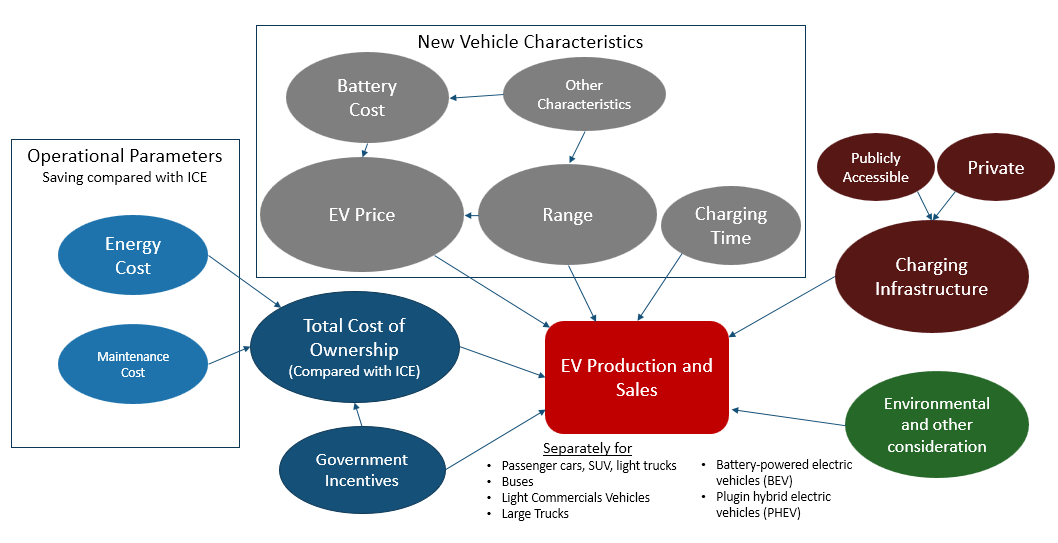Your cart is currently empty!
April 16, 2023
Total Number of Electric Vehicles in US 2019-2030

April 16, 2023
Total Number of Electric Vehicles in US 2019-2030
In 2022, the US electrical vehicles market share is just 5.6% and it is less than 1% of the 250 million cars, SUVs and light-duty trucks on the road. Incorrys expects the total number of registered electric vehicles in the US to reach 28 million in 2030, up from just 1.6 million in 2020. Battery powered cars, SUVs and light trucks (BEV) accounts for 68% of all registered electric vehicles in 2030; PHEVs represent 32%. A switch to EVs is essential for the US to be carbon-neutral by 2050. However, it will be a slow process as only about 17 million new cars are sold each year. President Biden has set an ambitious goal of half of new car sales to be electric, fuel cell or hybrid electric vehicles by 2030. The EPA projects the revised standard would lead to 17% more EV sales in 2026, which is very challenging.
Car are passenger light-duty vehicles and include light trucks and SUVs. Vans are light commercial vehicles. Trucks/Buses include medium and heavy-duty vehicles.
Incorrys Electric Vehicle Forecast Model

Incorrys forecasting models includes a number of parameters in order to predict future production and sales of electric vehicles (EV). The most critical parameters are related to vehicle design and include battery cost, range, and charging time. In recent years, significant progress has been made toward battery technologies. Incorrys analyzed the trends related to improvements in battery parameters. Incorrys also analyzed direct and indirect incentives in different jurisdictions toward EV’s of different types (Passenger cars, SUV, light trucks, buses, light commercials vehicles (LCV), and large trucks). The growth of EV production and sales is affected by charging infrastructure, including publicly available and private charger of different types. EV price and government incentives, together with energy cost and maintenance cost savings, contribute to total cost of ownership which are continuously declining in recent years.
See also:
Total Number of Electric Vehicles Worldwide 2019-2030
Market Share of New Electric Vehicles 2022
Electric Car Stock By Country 2020-2022
Electric Light Commercial Vehicles (ELCV) Stock by Country 2022
Global Trend in Light Vehicle Sales 2023-2030
Annual New Electric Vehicle Sales 2019, 2025, 2030
North American Electric Vehicles Outlook by Region 2020-2030